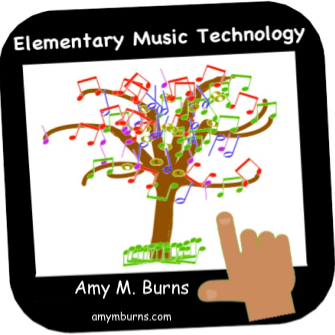#techtiptuesday How to Create a Simple Choice Board Using Google Slides
How to Create a Simple Choice Board Using Google Slides
Choice boards are an excellent way to provide students with engaging, self-directed learning opportunities. Google Slides is an easy and accessible tool for designing interactive choice boards that can be used for any subject or grade level. Follow these simple steps to create your own!
Step 1: Set Up Your Google Slides Presentation
Open Google Slides and start a new blank presentation.
Click on File > Page setup, and choose a custom size if desired (e.g., a square 8.5 x 8.5 inches for easy printing).
Delete any default text boxes to start with a clean slate.
Step 2: Design Your Layout
Create a title slide to introduce the choice board. Add a title and brief instructions for students (e.g., "Choose three activities to complete this week").
Take screenshots of the slides you will create for each choice (e.g., slides with a video, interactive game, or lyric sheet).
Insert these screenshots into the title slide, arranging them in a grid or visually appealing layout. Each screenshot will act as a clickable link.
Step 3: Add Your Activities
For each choice, create a dedicated slide. Include the activity details, such as:
A video: Use Insert > Video to embed a YouTube or uploaded video.
An interactive game: Insert a link to an online game or activity.
A lyric sheet: Upload the document and link it using Insert > Link or include it directly on the slide.
Design each slide with clear instructions and engaging visuals.
Step 4: Link Screenshots to Slides
On the title slide, click on a screenshot to select it.
Click the Insert > Link option or press Ctrl+K (Cmd+K on Mac).
In the "Link" field, select Slides in this presentation, and choose the slide corresponding to the activity.
Repeat this process for each screenshot to ensure students can navigate seamlessly from the title slide to the activity slides.
Step 5: Make It Interactive
Add shapes, such as checkboxes or stars, next to each activity so students can mark completed tasks.
Use the Insert > Text box option to provide space for students to reflect on or summarize their work directly in the slide deck.
Step 6: Share with Students
Click the Share button in the top-right corner of Google Slides.
Change the sharing settings to "Anyone with the link" or restrict access to your students’ email domain.
Set the sharing option to View only and instruct students to make a copy for themselves to interact with the choice board.
Pro Tips:
Save time by using pre-made templates available online and tailoring them to your needs.
Incorporate a variety of activity types (creative, analytical, physical) to cater to different learning styles.
Test the links thoroughly before sharing to ensure a smooth user experience.
By linking screenshots on the title slide to corresponding activity slides, you create an intuitive and visually engaging choice board. With Google Slides, students can easily explore and complete activities, making learning both fun and interactive!
